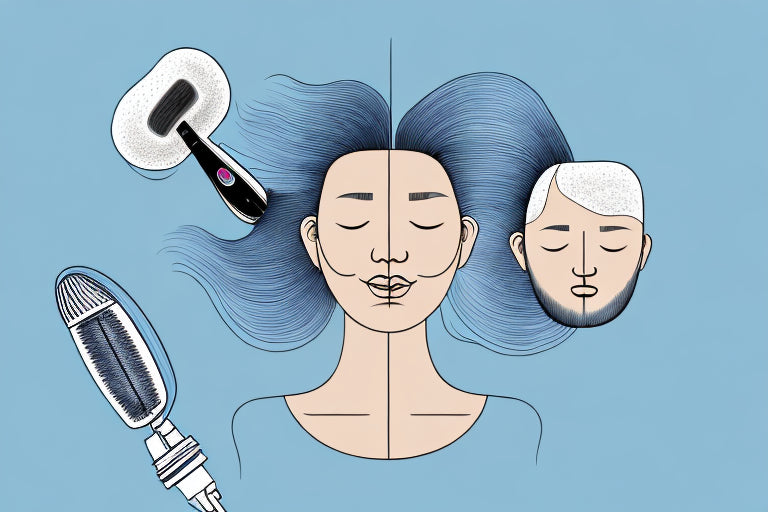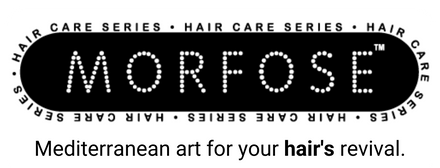How to Combat Frizz and Humidity with Professional Hair Care
Posted by MORFOSE COSMETICS

How to Combat Frizz and Humidity with Professional Hair Care
Introduction
Frizz and humidity can wreak havoc on our hair, turning our once sleek and styled locks into a wild, unruly mess. If you've ever struggled with frizzy hair caused by humidity, you know how frustrating it can be to maintain a polished look. But fear not! With the right professional hair care techniques and products, you can combat frizz and humidity and achieve smooth, manageable hair. In this comprehensive guide, we'll explore various strategies to help you tame frizz and keep your hair looking fabulous even in the most humid conditions.
Understanding Frizz and Humidity
What Causes Frizz?
Frizz is caused by the swelling of hair strands when they absorb moisture from the environment. Each hair strand is composed of layers, and when these layers become dehydrated, they seek moisture from the air, causing them to expand and create frizz. People with naturally curly or wavy hair are more prone to frizz due to the shape of their hair strands.
The Role of Humidity
Humidity exacerbates frizz because it introduces additional moisture into the air, making it easier for hair strands to absorb it. High humidity levels disrupt the delicate balance of moisture in your hair, leading to increased frizz and flyaways. The excess moisture in the air also weighs down hair, making it appear limp and lifeless.
Professional Hair Care Tips for Combatting Frizz and Humidity
1. Hydration is Key
To combat frizz, it's crucial to keep your hair well-hydrated. Start by using a moisturizing shampoo and conditioner specifically formulated for frizz-prone hair. Look for products that contain ingredients like argan oil, shea butter, or glycerin, as they help retain moisture and reduce frizz. Additionally, incorporate a hydrating hair mask into your weekly routine to provide deep nourishment and restore moisture to your locks.
2. Seal in Moisture with Leave-In Conditioner
After washing your hair, apply a leave-in conditioner to seal in moisture and create a protective barrier against humidity. Choose a lightweight, anti-frizz leave-in conditioner that won't weigh down your hair. Focus on applying the product to the mid-lengths and ends of your hair, as these areas are more prone to frizz. Leave-in conditioners not only hydrate your hair but also help detangle and smooth the cuticles for a sleeker appearance.
3. Avoid Overwashing
Frequent washing can strip your hair of its natural oils, leading to dryness and frizz. Instead, opt for a gentle cleansing routine and aim to wash your hair every other day or every few days, depending on your hair type. On non-wash days, use dry shampoo to refresh your roots and absorb excess oil without drying out your strands.
4. Heat Styling Precautions
Heat styling tools like flat irons and curling wands can further damage already frizz-prone hair. Minimize heat exposure by using these tools on the lowest temperature setting necessary to achieve your desired style. Apply a heat protectant spray or serum before styling to create a barrier between your hair and the heat. Additionally, consider embracing heatless hairstyles like braids or updos to give your hair a break from heat styling.
5. Choose the Right Hair Products
Using the right hair products is essential for combating frizz and humidity. Look for serums, oils, or creams specifically designed to control frizz and provide humidity resistance. These products typically contain ingredients like silicone or polymers that coat the hair strands, sealing them and blocking out moisture from the environment. Apply a small amount of the product to your palms, rub them together, and gently distribute it through your hair, focusing on the ends.
6. Embrace Protective Hairstyles
When the humidity is high, consider styling your hair in protective hairstyles that minimize exposure to moisture. Braids, buns, and ponytails not only keep your hair off your face but also protect it from the frizz-inducing effects of humidity. Experiment with different updos and braided styles to find the ones that suit your hair type and personal style.
7. Regular Trims
Split ends and damaged hair are more prone to frizz. Schedule regular trims every 6-8 weeks to remove any split ends and keep your hair healthy. Regular trims also promote better hair growth and make your hair more manageable overall.
Conclusion
Don't let frizz and humidity control your hairstyle. By following these professional hair care tips, you can combat frizz, keep your hair hydrated, and maintain a sleek and polished look even in humid conditions. Remember to choose the right products, protect your hair from excessive heat styling, and embrace hairstyles that minimize exposure to moisture. With a little extra care and the right techniques, you'll have beautifully smooth and frizz-free hair that will make others envious. Say goodbye to bad hair days and hello to gorgeous, humidity-resistant locks!


